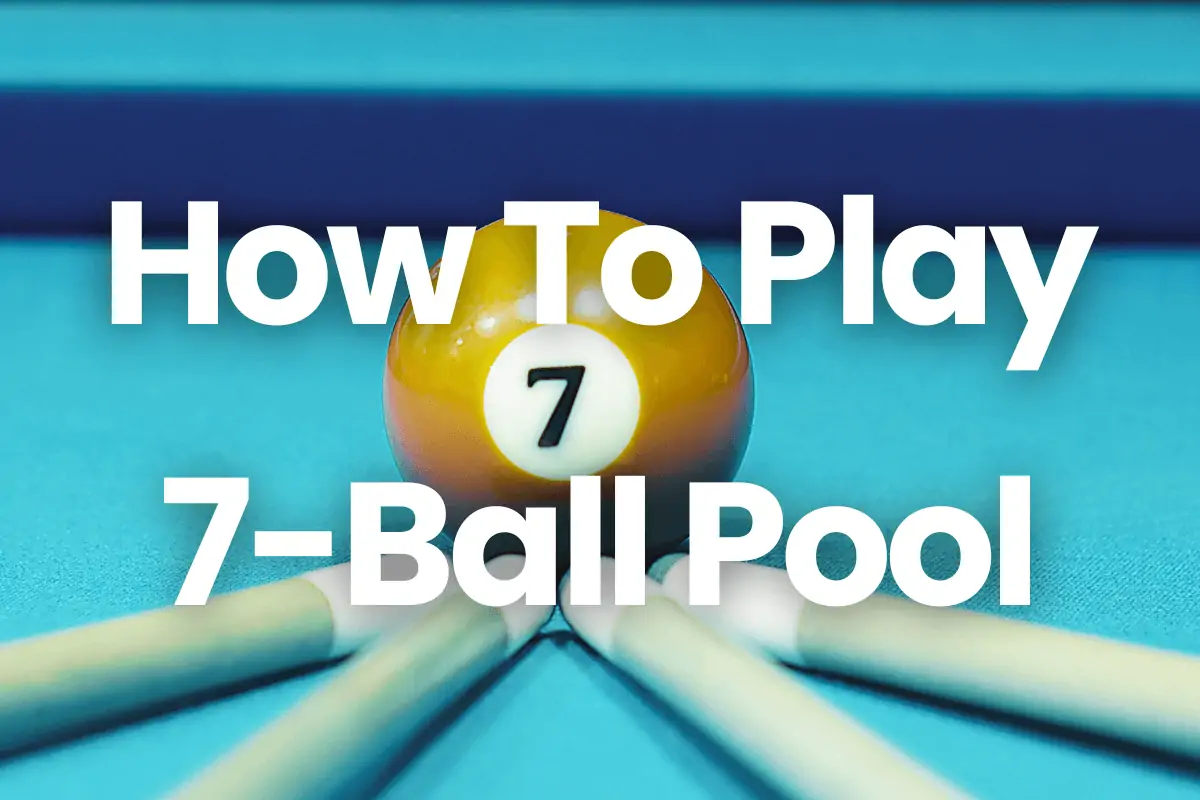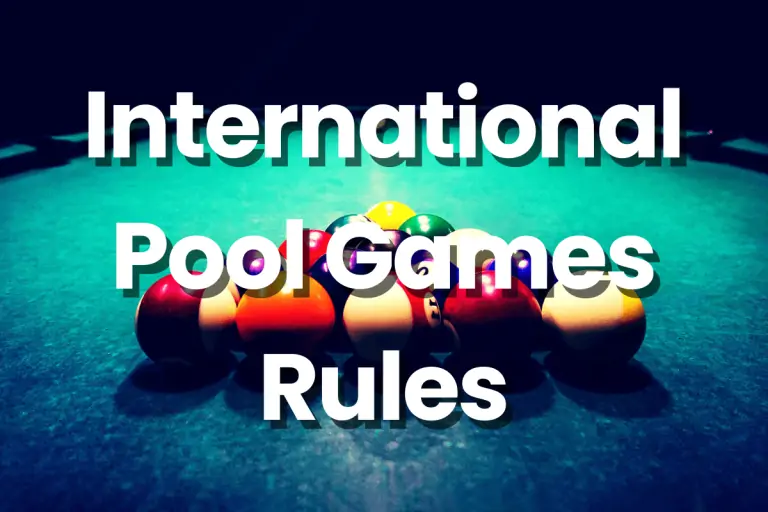How to play 7-Ball Pool | Essential Rules and Winning Tips
7-Ball Pool, a dynamic and less commonly known variant of traditional pool games, offers a unique blend of strategy and skill, captivating players worldwide. Distinguished by its streamlined gameplay and fewer balls, 7-Ball Pool is accessible and enjoyable for players at all levels, from eager beginners learning how to play 7-ball pool to seasoned professionals seeking a quick-paced, strategic game. Its simplicity in setup yet complexity in execution provides an ideal playground for honing cue sports skills, making it a favored choice for those looking to diversify their pool-playing experience. Whether you’re just starting out or are a pool veteran, 7-Ball Pool promises an engaging and rewarding journey into the world of cue sports.
What is a 7-Ball Pool: History and Evolution
7-Ball Pool is a captivating cue sport that has carved out its niche among various pool games. Its history, while not as extensively documented as more popular variants like 8-ball or 9-ball, is rooted in the rich tradition of billiards.
Origin and Development of 7-Ball Pool
- The exact origin of 7-Ball Pool is somewhat obscure, but it is believed to have emerged as a variation of other pool games, adapting and simplifying some of their rules.
- The game was likely developed to offer a quicker, more dynamic version of pool, appealing to players seeking a faster-paced game.
- Unlike its predecessors, 7-Ball Pool uses fewer balls, making it more accessible and easier to follow for beginners, yet it retains a level of strategic depth that appeals to experienced players.
Differences from Other Pool Games
Number of Balls: The most obvious difference is the number of balls used. 7-Ball Pool is played with seven object balls, numbered 1 through 7, and a cue ball, as opposed to the 15 object balls plus a cue ball in 8-ball, and nine balls in 9-ball.
Game Objective: In 7-Ball Pool, the aim is to pocket the balls in numerical order, culminating with the 7-ball, which is similar to 9-ball. In contrast, 8-ball involves pocketing either a group of solids or stripes before legally pocketing the 8-ball.
Rack Formation: The balls in 7-Ball Pool are racked in a hexagonal pattern, different from the triangle racks of 8-ball and 9-ball.
Game Pace: 7-Ball Pool is typically faster-paced due to fewer balls, leading to shorter games. This dynamic nature offers a different level of excitement and requires a slightly different strategic approach.
How to Play 7-Ball Pool – A Complete Guide
Equipment for 7-Ball Pool
Pool Table: Standard pool tables used for 7-Ball Pool are typically 9 feet by 4.5 feet. However, the game can be played on different sizes, including 8-foot or 7-foot tables, catering to various spaces and preferences.
Cues: A good-quality cue stick is essential. These range from 57 to 58 inches in length, suitable for most adult players. Choosing a cue often comes down to personal comfort and preference in terms of weight, balance, and grip.
Balls: 7-Ball Pool uses seven object balls, numbered 1 through 7, and a cue ball. These balls are typically 2.25 inches in diameter, the standard size for pool balls.
Other Necessary Equipment
Rack: A hexagonal rack is used for 7-Ball Pool to set up the balls in the game’s unique starting formation.
Chalk: Cue chalk is used to increase the friction between the cue tip and the cue ball, preventing miscues.
Bridge Stick: Helpful for shots where the cue ball is out of comfortable reach, a bridge stick can provide the necessary support.
Basic Rules of 7-Ball Pool
Objective and Basic Gameplay
- The primary objective in 7-Ball Pool is to pocket the balls in numerical order, from 1 through 7, with the game culminating by legally pocketing the 7-ball.
- Players take turns, and a turn continues as long as a player legally pockets a ball. The game requires precision and strategy in both shot selection and cue ball control.
Rack Setup
- The seven object balls are racked in a hexagonal formation, with the 1-ball at the apex and the 7-ball in the center. The other balls are placed randomly within the rack.
- The rack is positioned so that the 1-ball is at the spot closest to the end of the table from where the break is taken (the head spot).
Order of Play
- Players determine who breaks (starts the game) by a coin toss or similar method.
- The player who wins the toss can choose to break or assign the break to the opponent.
- After the break, players take alternate turns. If a player pockets a ball legally, they continue to shoot.
Scoring System and Winning Conditions
- There is no point system in 7-Ball Pool; the game is won by pocketing the 7-ball legally.
- A player must pocket the balls in sequential order, from 1 to 7. Pocketing the 7-ball out of sequence, or before clearing the other balls, results in losing the game.
- If a player commits a foul, the opponent gets the chance to shoot with “ball in hand,” meaning they can place the cue ball anywhere on the table.
Advanced Rules and Regulations in 7-Ball Pool
Specific Rules
Call Shot: In some variations of 7-Ball Pool, players may be required to call the ball and the pocket for each shot. This rule adds a layer of difficulty and is often used in more competitive play.
Combination Shots: Players can execute combination shots (hitting a ball to pocket another ball) as long as they hit the lowest numbered ball on the table first.
Fouls and Penalties
Fouls: Common fouls include failing to hit the lowest-numbered ball first, not hitting any balls, pocketing the cue ball (scratch), or knocking a ball off the table.
Penalties for Fouls: After a foul, the incoming player is usually awarded ball in hand, where they can place the cue ball anywhere on the table for their shot.
Consecutive Fouls: Some rule sets may include penalties for multiple consecutive fouls, like loss of game after a certain number of fouls (often three).
Handling Rare Scenarios
Stalemate: If neither player can make a legal shot, or the game is in a continuous loop of safety plays, a stalemate may be called. The game might be replayed from the break, depending on the specific rules in place.
Jump Shots and Massé Shots: The legality of these shots varies. In some leagues or tournaments, jump shots (where the cue ball is made to jump over an obstructing ball) or massé shots (the cue ball is struck with a steep, downward angle) may be restricted or disallowed.
Interference: If an external factor (like a ball rolling onto the table from another table) interferes with a shot, the shot is typically replayed.
Situational Rules
Breaking a Tie: In tournament or league play, if a match is tied, a specific tie-breaking procedure, such as a single deciding game or a series of games, may be used.
Ball Re-spotting: In some variations, if a ball (other than the cue ball) is accidentally pocketed or knocked off the table, it may be re-spotted on the foot spot.
Reracks: Under certain circumstances, such as an illegal break, the balls may be re-racked, and the break is retaken or passed to the opposing player.
Effective Strategies and Techniques in 7-Ball Pool
Offensive Strategies
Shot Selection:
- Prioritize shots that not only pocket the current ball but also set up favorable positions for subsequent shots.
- Avoid overly complex shots that might jeopardize control of the table; sometimes a simpler shot can be more effective.
Position Play:
- Develop strong cue ball control to ensure favorable positioning after each shot. This is key in 7-Ball Pool due to the sequential nature of the game.
- Practice drills that focus on gently nudging the cue ball to the desired location after pocketing a ball.
Break Shot Techniques:
- Aim for a powerful yet controlled break. The goal is to spread the balls while keeping the cue ball on the table, ideally in the center for a wide range of shot options.
- Experiment with different positions and striking points on the cue ball during the break to find the most effective technique for your playing style.
Defensive Strategies
Safety Play:
- When a direct shot isn’t available or is too risky, play a safety. This could involve hiding the cue ball behind another ball or placing it in a position that makes the next shot difficult for your opponent.
- Understand the table layout to create challenging situations for your opponent while keeping your options open.
Controlling the Table:
- In scenarios where you can’t finish the table, focus on controlling the game. This might involve strategically pocketing certain balls while setting up defensive positions.
- Use a conservative approach when the game situation doesn’t favor aggressive play.
Conclusion
In mastering 7-Ball Pool, remember the basics: learn the rules, practice your shot selection and positioning, and refine your break shot. Don’t forget the importance of defensive play. Regular practice is key to improving your skills. Additionally, engaging with the pool community can offer valuable insights and make the game more enjoyable. Keep practicing, connect with fellow players, and enjoy the journey of becoming a skilled 7-Ball Pool player!
FAQs
Is 7-Ball Pool suitable for beginners?
Yes, its simpler rules and fewer balls make 7-Ball Pool an excellent choice for beginners, while still offering strategic depth for more experienced players.
Can you win 7-Ball Pool by pocketing the 7-ball on the break?
Yes, if you pocket the 7-ball on the break and don’t commit any fouls, you win the game immediately.
Can you call a safety in 7-Ball Pool?
Yes, you can call a safety. This means intentionally playing a shot where you don’t intend to pocket a ball, typically to place the cue ball in a position that makes it difficult for your opponent to make a legal shot. However, you must still hit the lowest-numbered ball on the table first.
Are jump shots and massé shots allowed in 7-Ball Pool?
The legality of jump shots and massé shots varies depending on the specific rules of the venue or tournament. Generally, they are allowed unless specifically prohibited.
How do you determine who breaks in 7-Ball Pool?
The player to break is usually determined by a coin toss, a lag, or mutual agreement. In tournament play, alternating breaks might be used.







